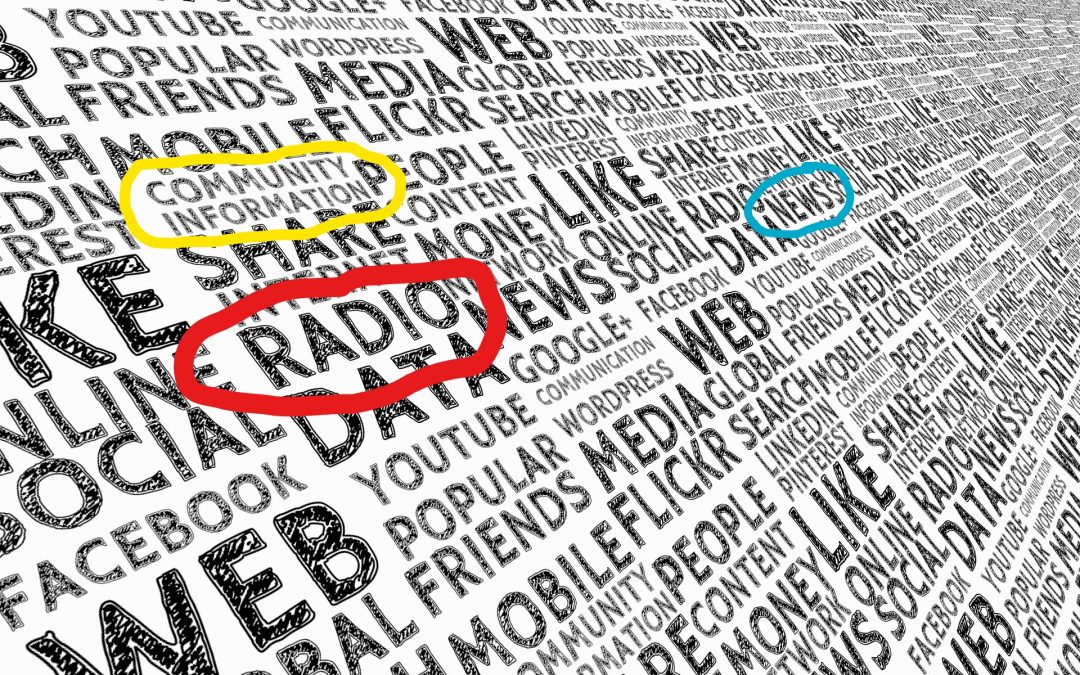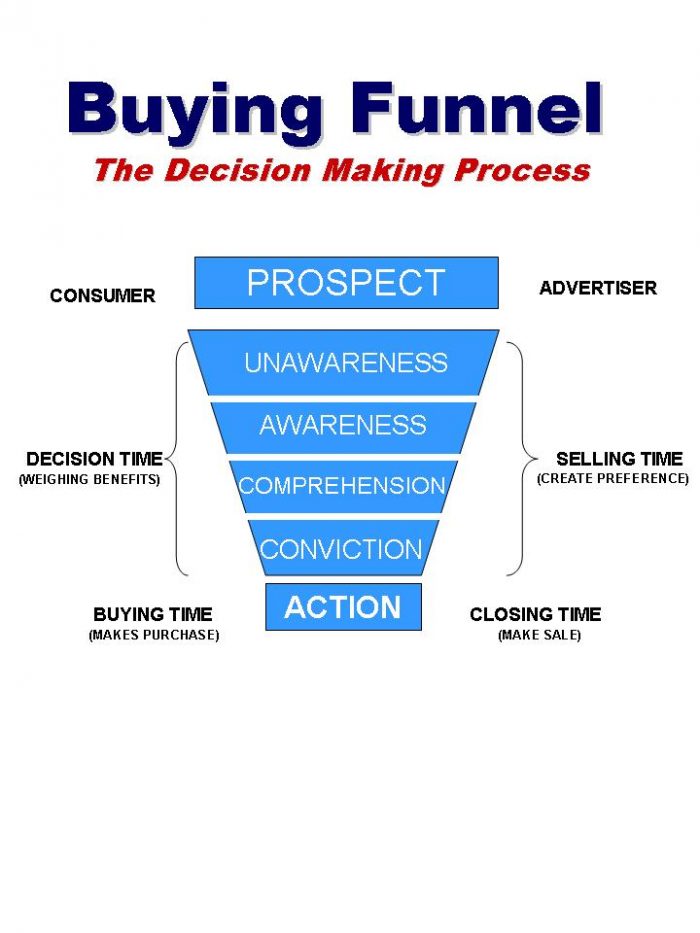
by Scott Howard | Sep 13, 2017 | Marketing and Advertising Insights, ScLoHo's Fort Wayne, ScLoHo's Media, The Not-So-Secret Writings of ScLoHo, WOWO Fort Wayne Radio Advertising with Scott Howard
NewsTalk 1190 WOWO Radio in Fort Wayne, Indiana is going to be 100 years old soon. Despite the most recent doomsday report that AM and FM radio stations would be obsolete before WOWO hits 100, I’m here to present some real reasons that the report is both right and wrong.
Broadcast radio is struggling to remain relevant as consumers embrace streaming platforms, according to a groundbreaking study that examines the disruption to radio caused by digital services.
These trends are crippling radio, which is witnessing historic declines in its audience and its relevance to listeners and advertisers. To survive, radio must innovate, learn from other media, and take control of its path forward into the third decade of this century and beyond.
That’s the intro to a 30 page report that says radio stations like the ones I work for are going the way of the phone book. Here’s a direct link to the entire report if you want to really dig in.
A dozen years ago, I was making the same prediction. Music radio was going to be a thing of the past. At the time I worked with legendary Fort Wayne WXKE Radio Icon Doc West and Doc knew the answer to the problem of music radio stations losing listeners to streaming services and satellite radio stations. Live and Locally Relevant. That was the mantra that Doc used to stay at the top of the heap of radio personalities back then.
WOWO radio used to be a music station when I was a kid and the most listened to radio personality before Doc West was Bob Sievers. His morning program on WOWO had 90% of the available audience tuned in. Farmers for the farm reports, kids like me, waiting to hear the weather, well, actually the school closings and everyone else listened to Bob on WOWO to know what was going on. Bob and WOWO were Live and Locally Relevant.
My reason for predicting the demise of AM & FM radio back then was the digital age as auto manufacturers were adding internet to their vehicles. More options for drivers to listen to their favorite music. I knew it would be an evolving change, simply because it would take time for these internet connected cars to replace the older vehicles.

Your Car, a “radio on wheels”
But then something else has kicked in that I didn’t foresee. The Internet of Things.
The IoT as it is called is the interconnection of stuff via the web that we didn’t need to have connected to the web previously.
The ability for your phone to respond to voice commands was a preview of what we have now with Alexa and the other digital personal assistant devices that are becoming common place.
But back to my headline for this story:
Why WOWO Radio Will Outlast The Naysayers
WOWO radio and our sister stations at Federated Media are embracing the digital age. They were the first in Fort Wayne to jump in and offer the radio programming to listeners on what ever digital platform the listeners wanted. Then they went a step further and began producing content that goes beyond what you can get by listening to the AM & FM radio signals. Podcasts, Videos, and plenty of on-demand content that you and I can read, watch or listen to when we want, where we want.

Listen to what you want, when you want
Our music stations, in Fort Wayne including WMEE, K-105 and 98.9 The Bear have been Live and Locally Relevant for decades! WOWO Radio with our News and Talk format for the past 20 years has a couple of national talk shows in the middle of the day, but every 30 minutes, we have Live and Locally Relevant news updates. Fort Wayne’s Morning News with Charly Butcher starts the weekday and afternoons with the Pat Miller Program, bookend each weekday with Live and Locally Relevant programming.
In case you still need another antidote as to the importance of local media, during tragic events like Hurricane Harvey, it was the local Texas radio stations that were the dominate source of information. Television isn’t portable but radio is.
But what about the radio audience overall? Is it shrinking?
After the report from the naysayer, two more reports came out to counter his claims. You can read them here and here.
But what I care about and so do the businesses I work with who use WOWO Radio to advertise by inviting our listeners to become their customers, is what is the state of radio listenership in Fort Wayne Indiana?
I researched it for this story. I have access to the Eastlan radio surveys from 2013 thru today that measures radio listener habits every 6 months in Fort Wayne.
Between 2013 and 2017, the total number of people age 12 and older who listen to a radio station in Metro Fort Wayne has grown by 25,000.
Boom.
Mic Drop.
396,000 weekly listeners in the spring of 2013.
421,000 weekly listeners in the spring of 2017.
How’s WOWO doing? Every survey that I have access to (including before 2013) show that WOWO radio continues to lead the pack with over 100,000 listeners every week, and 98%+ are grown ups.
In about 8 or 9 years WOWO will be celebrating a century of service. Now is the right time to join the other advertising partners who benefit from being on WOWO. Contact me to find out how.

by Scott Howard | Sep 5, 2017 | Marketing and Advertising Insights, ScLoHo's Fort Wayne, ScLoHo's Media, The Not-So-Secret Writings of ScLoHo, WOWO Fort Wayne Radio Advertising with Scott Howard
Where do you get your local news? Is traditional media dead yet?
These two questions have been on my mind for quite awhile and then last month we learned that a Fort Wayne news institution was making a major change:
The News-Sentinel is ending distribution of its afternoon newspaper as it shifts to a digital platform, Fort Wayne Newspapers announced.
Subscribers will still be offered News-Sentinel content in the morning Journal Gazette, as part of a renewal of the two newspapers’ joint operating agreement.
I wasn’t surprised, but I was saddened. In my youth, I was a paperboy of the afternoon paper in Fort Wayne and had a fondness for the paper even though it has been years since I bought one.
The survival of two local daily newspapers in a city the size of Fort Wayne was only due to some planning decades ago that allowed the morning and afternoon newspapers that were independently owned to form a Joint Operating Agreement. This J.O.A. was limited to advertising revenue and kept the news and editorial staffs separate for each paper.
For the past dozen years, I have had access to publication numbers of the two newspapers because of my affiliation with the Radio Advertising Bureau and their access to the numbers reported to the Audit Bureau of Circulations that keeps track of this data.
In 1999, the afternoon paper had over 45,000 subscribers, and that number was in the 20 thousand range 10 years later. The last report I have access to listed a total of 12,000 weekly subscribers to the News-Sentinel back in 2014 and odds are they were less than 10 thousand last week.
This is not just a local phenomenon. The decline of printed daily newspaper circulation has been going on for decades with alternatives popping up online. Many papers moved their content online and used those numbers to boost their subscription numbers that they would report, but the revenue didn’t match up.
A few years ago, I had coffee with a young woman who was in charge of selling digital advertising for the Fort Wayne Newspapers and I remember my advice:
Your job is going to be to keep advertisers spending levels where they are today. The businesses are going to decrease their spending in the printed paper and you can help them stay by migrating those funds into digital products.
I laid out a 5 year plan and at the end of those 5 years, 90% of an advertisers budget was being spent in digital media with the remaining 10% on a souvenir collectors edition of the printed newspaper. She wasn’t allowed to follow my advice and now she works elsewhere.
A couple years later, after I was interviewed to become the Digital Advertising Sales Manager for the Fort Wayne Newspapers they decided to eliminate the position and combine the sales departments of both digital and print.
So where do we as consumers get our news? I still see people reading the morning paper in Fort Wayne on the days I visit a coffee shop. But those numbers have been declining too.
Fort Wayne has over 20 radio stations and a number of TV stations. The television stations that offer local news include a CBS, ABC, NBC and Fox affiliate. According to the ratings, the CBS station has double the audience for local news over the ABC station and the NBC stations audience didn’t hardly register in the latest survey. The Fox station has one newscast at a time that no one else does (10 pm).
On the radio side, WOWO Radio is the only station with a fully staffed full time news staff that does live local news every 30 minutes from 5am until 6pm weekdays, and more frequently between 5 and 9am. Yes, there are other stations that offer local news, but not all day and not to the degree that WOWO does. WOWO has additional news sources and providers in neighboring communities from our co-owned stations in Warsaw, Elkhart, South Bend and Goshen along with “news-partners” at local print and TV stations.
Long ago, WOWO’s news slogan was, “Where you go when you need to know”, and as a News Talk formatted radio station for over 20 years, the commitment remains. WOWO recognized that where we get out news continues to evolve. Nearly every local news story is found on WOWO.com.
News and Weather alerts are sent via text to subscribers. Updates on Facebook and Twitter are posted online too. WOWO is owned by Federated Media and WOWO supplies the news to our sister stations in Fort Wayne including WMEE, 98.9 The Bear & K-105.
Having worked for a couple of the other radio station groups, they simply don’t have a news department like WOWO & Federated Media. When I was there, it was more like grab the morning newspaper and pull a couple of headlines to rewrite and call it a newscast, style of news. And to be fair, there are two radio stations on the non-profit part of the FM dial that have news departments of varying degrees.
News is not the only reason we have traditional media. My original two questions when I started this were:
Where do you get your local news? Is traditional media dead yet?
Individual TV shows on the major broadcast networks can still find a healthy sized audience, but those networks are not filling all their prime time weekly slots with new shows. Lot’s of repeats will air on Friday and Saturday nights, I’ve observed. Broadcast TV is trying to adjust to the on-demand world of entertainment we have now.
Music radio stations have been battling alternatives for decades and usually are still winning if they are locally connected to their listeners and their community. The Radio Advertising Bureau still tells us that over 90% of folks age 13 and older listen to a radio station every week.
From a business standpoint, you as a business person need to understand that there are still some very valuable traditional media sources that you can use to advertise with. It’s just not the same as it was 30 years ago or even 10 years ago and it may require someone to help guide you to make smart decisions on where to advertise.
That’s where I can help. I make recommendations beyond what I can sell to you myself, when I see an opportunity that you should take advantage of. Want help? Let’s talk.

by Scott Howard | Aug 16, 2017 | Marketing and Advertising Insights, The Not-So-Secret Writings of ScLoHo, WOWO Fort Wayne Radio Advertising with Scott Howard
Invitations and the Buying Funnel. A couple summers ago I wrote that you have to Invite People To Do Business With You. Read it again and I’ve got an update for you regarding how this works with the Buying Funnel.
The simplest, most basic way to describe marketing is, Invite People To Do Business With You.
Use this as your yardstick to see if your marketing efforts are focused.
Invite People To Do Business With You applies to your paid radio ads.
Invite People To Do Business With You applies to your business cards.
Invite People To Do Business With You applies to your social media posts.
Invite People To Do Business With You also applies to the way your staff behaves once potential customers visit your business. Because they can also leave without spending any money.
Invite People To Do Business With You when you are not working. You do this by being a nice person. By leaving a positive impression.
Invite People To Do Business With You with your logo-ed shirts and vehicles. And as a side note, be sure anyone and everyone who is driving, riding in, or wearing anything with your name on it gives a positive impression all the time.
Invite People To Do Business With You but don’t be obnoxious about it. Be Friendly. It’s that simple and that hard.
Those timeless words are still true. But I want to expand on this concept of Invite People to Do Business With You.
One invitation is rarely enough.
If this is a new potential customer that you are inviting to do business with you, you need to penetrate their world repeatedly. That’s why I don’t sell one radio commercial on WOWO.
Your business needs to move through some variation of what is known as a buying funnel.

Every New Potential Customer has to go through the Buying Funnel
If you have been Inviting People to Do Business With You, you’ve been moving people from the total unawareness stage to a general awareness. However, if they don’t have a need for what you offer, they will not go any further in the Buying Funnel.
When a triggering event occurs in their life, (not your business) their awareness of you becomes more keen and they move through the next steps which are Comprehension of your business, Conviction that your business is the one they want to deal with and finally taking Action and becoming your paying customer.
That time between the first invitation and when they become your customer is the only time you have to invite them to spend money with you.
If you advertise for just a few weeks and then stop before they have made that purchase with you, there is a strong likelihood that they will not become your customer.
Sure, they are still going to buy, but not from you. They’ll buy from your competitor that has continued to advertise and invite them.
And once they have bought from someone else, you lost until the next time they need to buy.
Let me wrap this up by sharing with you what my job is all about. My job is to help you invite people to do business with you but I go beyond that. My passion is to help you organize a marketing plan that takes this buying funnel into consideration so you don’t waste money, but take advantage of my decades of experience and apply to your business success.
Want help? Let’s talk.

by Scott Howard | Aug 9, 2017 | Marketing and Advertising Insights, ScLoHo's Web World, The Not-So-Secret Writings of ScLoHo, WOWO Fort Wayne Radio Advertising with Scott Howard
GeoFencing is a term that I have used regularly and repeatedly for the past 3 years and apparently others in the advertising and marketing world have too.
But it has caused a ton of confusion because some people who are selling this service don’t understand how it works, what it does and so today I’m here to set the record straight.
Save this article or podcast as a reference so when someone tries to sell you GeoFencing, you know if they as much or more than they do.
Here’s a modern day explanation of GeoFencing:
GeoFencing is drawing a border or fence around a location that is then used to identify potential customers because they stepped inside the GeoFence.
Here’s how I offer GeoFencing as a digital marketing tool:
Along with the radio options I offer with WOWO Radio to invite potential customers to your business, I also have a number of online options I offer through the Federated Digital Solutions division of our company.
Custom Audience Targeting has been proven to be one of the most highly effective online options. We use Custom Audience Targeting to determine who to serve online digital banner ads to. Depending on the business, we will use a combination of the following 4 tools to find the right people.
- Site Retargeting. This is serving ads to people who have visited your website. We know that they are potential customers because they have visited your website and we want to keep you Top Of Mind after they leave, because a majority of first time visitors don’t buy on the first visit.
- Search Targeting. These people are qualified because they did an internet search for you or the products or services you offer. Search Targeting is an exclusive offered by our vendor partner for Digital Display Banner ads. Keywords are an important criteria in finding the right people using this tool.
- Contexual Targeting. Also called Content Based Targeting. Potential customers are identified because of their browsing habits. The content someone reads online in an article or email has keywords and phrases that match the words and phrases for my advertising partner.
- GeoFence Targeting. When someone enters a certain geographic zone, border or fence, they are qualified to receive your ads.
I don’t sell these four tools separately. We offer them as a complete solution, a Custom Audience Targeting solution to find the right people to serve ads to for your business to drive them to your website.
Here’s why we do it this way:
Each business is different and there is no “one size fits all” formula for using these 4 tools.
A business has to have enough organic traffic that it makes sense to allocate enough ads to the site retargeting tool and at the beginning of a campaign, many businesses don’t have enough.
That’s why the other 3 tools are also used. Or at least 2 of the tools are also used.
See, GeoFencing isn’t appropriate for all business either. Why?
Some business don’t have a physical location that their customers come to. A plumber for example. When you need a plumber, you don’t go visiting plumbers and ask them to follow you home. You call them and usually you have no idea where their shop or office is.
I do have a couple of examples of some really cool GeoFencing campaigns that were highly effective. One is a doctor who GeoFenced other doctors. My doctor has a different business model and the offices we GeoFenced were using the traditional business model. We were able to track new patients that came to my doctor after visiting the GeoFenced doctors.
Pretty cool, right?
How does your phone identify you as someone who qualifies to see these ads?
Simple answer: Location Services.
This is built into all of our smartphones and most of the apps on our phone use it.
Your phone’s technology is telling others where you are.
When you (your phone) goes certain places, you are being tracked.
Who is tracking you?
Facebook for one. Google for another. Any app that relies on knowing where you are to provide you with important information.
I just took a quick check of the apps on my android smartphone and some of the apps that are tracking me include:
- My camera
- Chrome web browser
- My Contacts
- Emergency Alerts
- Facebook
- my bank app
- all things Google
- my hair cutting app
- Xfinity Hotspots app
- iHeart Radio app
- LinkedIn app
- Google Maps (duh)
- Facebook Messenger app
- My car insurance app
- Panera app
- Starbucks app
- Google Photos
- Redbox app
- Regal Cinema app
- the Weather Channel app
- Twitter
- Instagram
- YouTube
- Yelp
- a couple of local news apps
- a couple of national news apps
Turns out that nearly every app on my phone is tracking me. And the same is true for you.
The Location Services app built into your phone that communicates with the GPS systems that allows your phone and the apps to know where you are so your phone and the apps can tell you where the closest Starbucks or Panera is located without you having to know where exactly you are.
This location service also is important when there is bad weather heading our way to alert us, or if we are using our phone’s navigation service to guide us down the road. When you post on social media and it asks you if you want to include your location, that’s all possible due to this same technology.
GeoFencing by itself is not a marketing solution. But it is a marketing tool that when used properly can be pretty powerful at finding the right people to target your online ads to.
Before wrapping this up, I’m going to clear up a couple more misconceptions about GeoFencing and the rest of this Custom Audience Targeting that I offer.
- Everyone that walks into your GeoFence is not necessarily going to start receiving your ads. You are buying a certain quantity of ad impressions and there are usually going to be more people who enter your GeoFence than you have bought ads for. I can show you the formula we use that estimates the number of people you will reach with your ads.
- The ads don’t just pop up all over your phone instantly. That would be annoying. However there are plenty of apps that are advertising supported along with websites that have space for ads and that’s where your ads show up.
- There is a Huge Difference in the methods and capabilities of both the companies and the sales people that offer digital advertising campaigns. I have seen the programs offered by local Fort Wayne radio stations, the “phone book companies (Dex & Hibu) and independent digital advertising agencies, even some long standing traditional ad agencies and through thorough research and verification by myself and other experts, in nearly every case, no one was able to provide a better service than what I have with the Custom Audience Targeting Digital Ad Solution with Federated Digital.
That’s enough for now, want to know more and see if this is appropriate for your company? Reach out to me and let’s talk.

by Scott Howard | Aug 2, 2017 | Marketing and Advertising Insights, ScLoHo's Collective Wisdom, The Not-So-Secret Writings of ScLoHo, WOWO Fort Wayne Radio Advertising with Scott Howard
Today, I’m going to talk to you from my generational perspective and I have one question for you:
Do You Want Our Money?
I am a young Baby Boomer. I am also a WOWO Radio Listener.
And I work for WOWO in the advertising sales department. That means I am the dude you can talk to about buying advertising for your company on WOWO. You can email me directly at my work email. It’s Scott@WOWO.com
But the rest of this piece is about me and my generation, the Baby Boomers. I just read an article from Mediapost that says that too many businesses are losing out because they are ignoring the Baby Boomer Generation with their advertising.
As a member of that age group and one that also deals with requests from advertising agencies, I totally agree.
First of all, let me set the stage with some facts from the Mediapost article and elsewhere. 
The Boomer markets (those between 53 and 71 years of age) are comprised of approximately 78 million customers.
That is the biggest demographic group (age wise) in this country. It’s also the group that is spending the big bucks that younger generations wish they had to spend.
According to a Pew survey, Boomers are outspending every other affluent category by $1 trillion per year. It was predicted that annual spending would exceed $4.6 trillion per year by 2015, and it has. The aging Boomer customer is today’s target population and, even more so, tomorrow’s.
The Mediapost article talks about the digital disconnect:
Seventy percent of all Baby Boomers surf online. It’s estimated that those 50 and up spend more than $7 billion every year in online purchases. Several media surveys discovered that approximately 17% of all those surveyed in the 45 and over age groups believe that online advertising is intended for them.
Look at those numbers for a second. 70% of all of us Baby Boomers surf online. That includes the retired ones, by the way. But less than 20%, the number I quoted is only 17% of Boomers believe online advertising is intended for them. 
This is a wake up call to anyone under the age of 50 who is responsible for advertising and marketing. I don’t care if you run your own business, your parents business or work for an advertising agency… you need to pay attention and understand there are a whole helluva lot of people over 50 that can make you successful if you simply invite them to spend money with you instead of ignoring us.
A few more quotes from the Mediapost article:
Be willing to change your frame of reference (paradigm shift). Don’t let “Boomer customer myopia” interfere with an intelligent approach to improving Boomer customer satisfaction.
In other words, the first step is recognizing the opportunity that I’m talking about and be willing to adjust your marketing tactics to invite Baby Boomers to spend their money with you. 
Avoid using the age of target markets as the determining factor… Use your knowledge of life stage changes to determine your approach to service and marketing communications improvement.
I’m going to share with you what they mean regarding Life Stages in a second. But first a couple of words on how I can help you.
In the digital world, I have been advising companies for the past dozen years on how to improve their ability to be found with some basic Search Engine Optimization practices that remain relevant. I even stepped away from the radio world a couple of times to work full time in the web and social media worlds.
Today, along with connecting you with Baby Boomers via WOWO radio, I also have some proven digital marketing solutions that I can offer through the Federated Digital Solutions division of Federated Media. I saw proven because I have the data to show the results and we can talk about how to create a custom digital solution for your company if that is appropriate.
And then there is the mighty 1190 WOWO radio. Now over 90 years old as an AM radio station with one of the biggest audiences in Northeast Indiana including Fort Wayne, Allen County and surrounding counties for miles and miles, stretching into Ohio and Michigan.
Listeners can also listen to WOWO locally on 107.5 FM and online via their favorite apps or the WOWO.com website.
But here’s what you need to know about connecting your business with Baby Boomers via WOWO radio.
It’s a no-brainer. Ever since I started with WOWO in 2013, the weekly total local audience according to the ratings service has been over 100,000 listeners.
There are a couple other stations in town that have over 100,000 weekly listeners but they have a significant number of kids that make that total add up to 100,000.
WOWO’s listenership according to the ratings is 99% grown-ups. Adults age 25 and older who buy stuff.
Half of those adults are Baby Boomers like me. 
By comparison, 2nd most listened to radio station by Baby Boomers less than half the number of listeners. If you want to know why this is important, take a look or listen to last week’s advertising nugget about reach and frequency. WOWO actually reaches more Baby Boomers than any other Fort Wayne radio station, by an over 2 to 1 margin.
Just recently I was negotiating with a media buyer that wants to buy advertising that will reach 25 to 54 year olds. That is a popular sweet spot in a lot of advertising agency mindsets. And sure that may have been the correct sweet spot to target a couple decades ago when Baby Boomers were that age, it’s very limiting thinking now as I have just demonstrated.
Before I wrap this up, I want to expand on why companies need to consider Lifestyles not just age demographics.
I’m 57. 
A good friend of mine, Kelly is also 57. His daughter is heading off to her 1st year of college right this very moment.
My wife and I have 5 kids from our previous marriages and 9 grandkids. While Kelly’s daughter is starting her college days at Indiana University, our oldest grandkid is starting his college days at Purdue University. Our youngest kid is 29 with three boys.
Yes, Kelley and his wife and me and my wife are all Baby Boomers but with very different lifestyles going on.
I also tend to have a wide spread of ages in my friendship circle. The oldest is 18 years older than me. I also hang out with those that are 30 years younger than me.
It’s not just the age, but the lifestyle that you need to pay attention to when planning your advertising.
I’ve done enough talking, I want to hear from you as I ask once again on behalf of myself and the other 78 million Baby Boomers, “Do you want our money?”













